VC&G Anthology Interview: Ed Smith, Black Video Game and Computer Pioneer
February 22nd, 2017 by Benj Edwards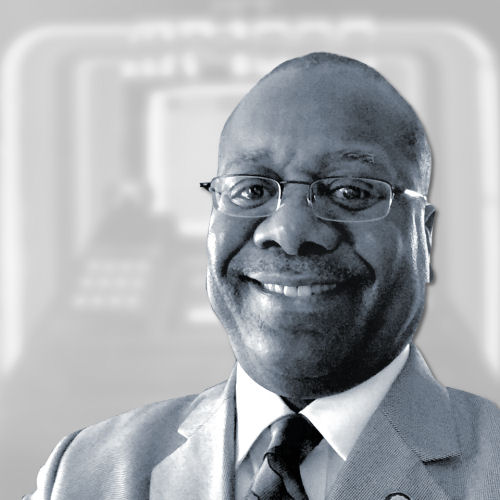 In 1978, APF Electronics introduced the MP1000, an early cartridge-based video game system. It wasn’t a smash hit like offerings from Atari, but it carried within its faux woodgrain housing a hidden kernel of cultural brilliance: The console would not have existed without the work of an African-American electronics engineer named Edward Lee Smith (b. Nov 4 1954).
In 1978, APF Electronics introduced the MP1000, an early cartridge-based video game system. It wasn’t a smash hit like offerings from Atari, but it carried within its faux woodgrain housing a hidden kernel of cultural brilliance: The console would not have existed without the work of an African-American electronics engineer named Edward Lee Smith (b. Nov 4 1954).
I first learned about Ed Smith while researching Jerry Lawson, one of the first known African-Americans in the video game industry. Not long after Lawson did his pioneering design work on the Fairchild Channel F in Silicon Valley, Smith began a similar task on the opposite side of the country, crafting his own contributions to the industry while at APF in New York City.
 As part of a small engineering team, Smith helped design the MP1000 and its plug-in computer expansion module, the Imagination Machine. That work got him noticed by Black Enterprise magazine, and in 1982, Smith and Lawson were both interviewed for a feature written by S. Lee Hilliard about the roles African-Americans had played in the video game revolution, which was a hot business topic at the time.
As part of a small engineering team, Smith helped design the MP1000 and its plug-in computer expansion module, the Imagination Machine. That work got him noticed by Black Enterprise magazine, and in 1982, Smith and Lawson were both interviewed for a feature written by S. Lee Hilliard about the roles African-Americans had played in the video game revolution, which was a hot business topic at the time.
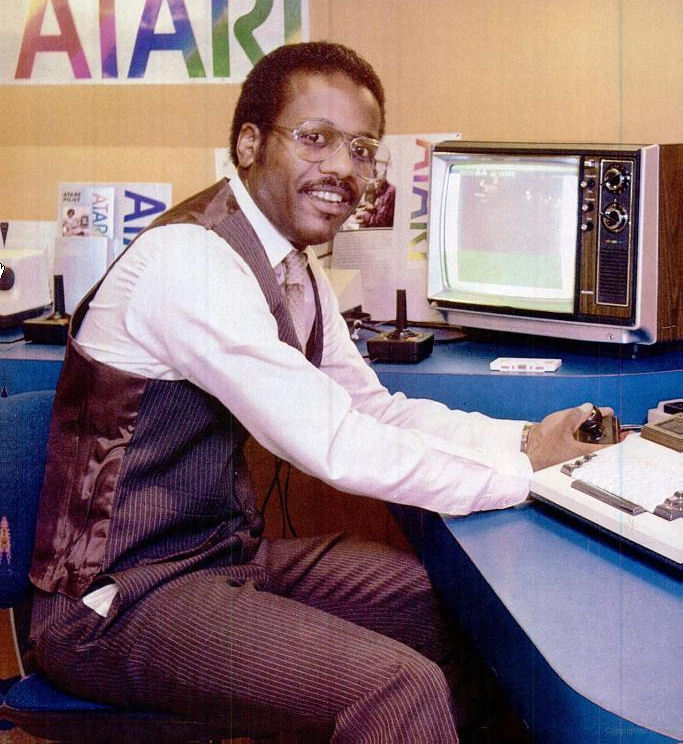 The Black Enterprise feature is where I first encountered Smith’s name. In a two-page spread, the article featured a wonderful photo of a proud and smiling Smith sitting at a desk with his best-known work — a fully-stocked Imagination Machine — laid out before him.
The Black Enterprise feature is where I first encountered Smith’s name. In a two-page spread, the article featured a wonderful photo of a proud and smiling Smith sitting at a desk with his best-known work — a fully-stocked Imagination Machine — laid out before him.
At the time the shot was taken, Smith had already left the video game industry and transitioned from engineering to sales. But his contributions were still eminently notable at the time because so very few blacks worked in the video game industry at the time. In fact, very few still do today.
I realized that in order to tell a fuller version of black history in video games and personal computers — a process I had begun in 2009 with the only full interview of the late Jerry Lawson yet published, I had to talk to Ed Smith and learn his story.
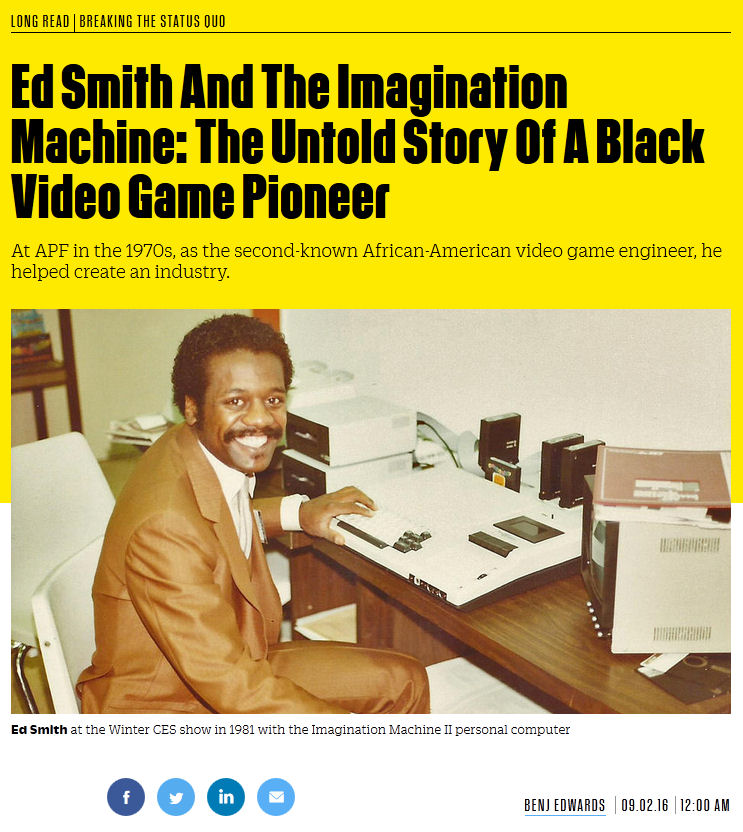 In February and March of 2016, I contacted Smith and interviewed him in depth over two long phone calls. I used our conversation (and interviews with other former APF employees) to craft a long article about Smith’s life and the work of APF Electronics for FastCompany, which was published last September.
In February and March of 2016, I contacted Smith and interviewed him in depth over two long phone calls. I used our conversation (and interviews with other former APF employees) to craft a long article about Smith’s life and the work of APF Electronics for FastCompany, which was published last September.
And yet there was so much richness in our interview left untouched by my article. I knew I would have to revisit it some day. His story is inspiring, his journey fascinating. And it meant a lot to me personally to learn about it.
Black History is American History
At school growing up in the American South, I was taught a very simple version of African-American history: blacks were once slaves, they were freed after the Civil War, then Martin Luther King, Jr. made everything OK, and then everyone was suddenly equal.
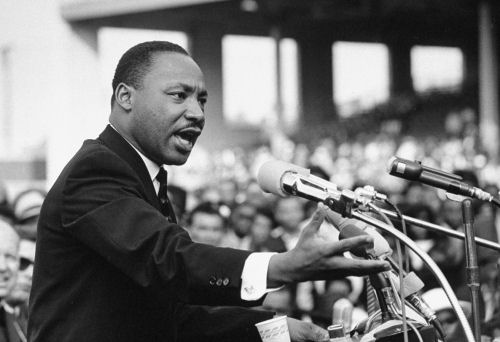 Never mind the gigantic historical gaps in between — for example, everything that happened between 1865 and 1963 — and that the last statement from my childhood education is far from being true.
Never mind the gigantic historical gaps in between — for example, everything that happened between 1865 and 1963 — and that the last statement from my childhood education is far from being true.
It troubles me that most white Americans today have chosen, either through indifference or conscious deliberation, to disavow any culpability for our country’s legacy of slavery. Even among the tolerant-minded, one might think that since there are no American chattel slaves or slave owners alive today, why bother even bringing it up?
Racism didn’t magically stop when chattel slavery became illegal. The suffering it wrought is still ongoing. No history of black achievement in the United States can be honest while simultaneously ignoring the continuing long shadow of slavery on today’s society.
In many states, in many jurisdictions, the punishment for simply having dark skin was institutionalized in cruel new ways post-1865, and it has been in the interest of those who want to retain white control over America to downplay frequent and tragic events of racial oppression.
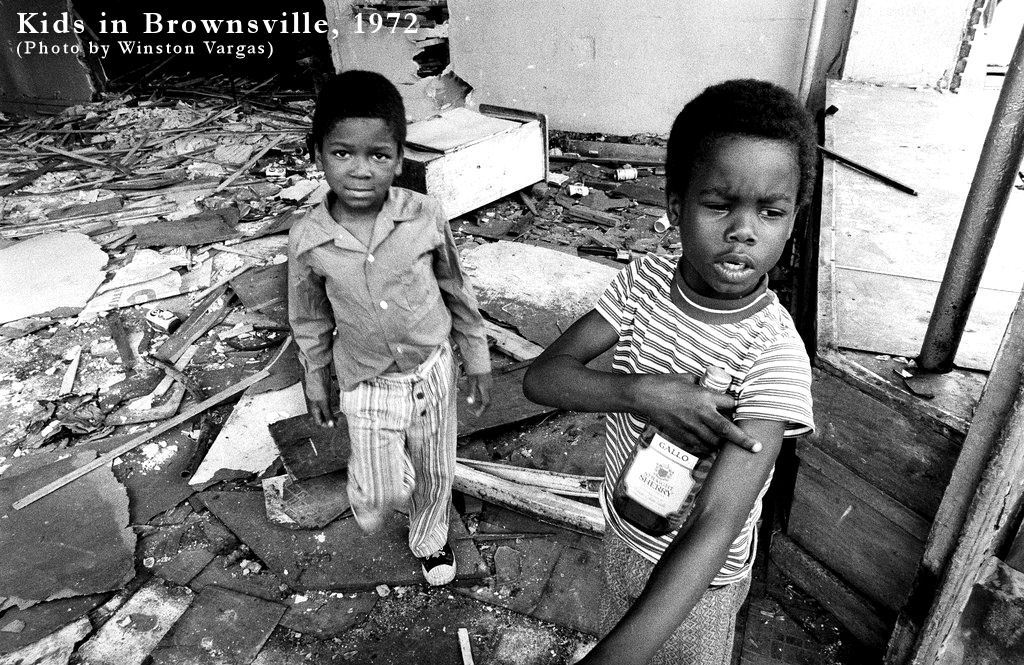 Our children should be taught that discrimination is not past-tense, and that the effects of slavery are very real and alive, among them: The gnawing, degrading issues of presumed inferiority, the abject poverty of opportunity many face due to racist isolation, and the potential of random terror at the hands of law enforcement that punctuates the daily lives of millions of black Americans.
Our children should be taught that discrimination is not past-tense, and that the effects of slavery are very real and alive, among them: The gnawing, degrading issues of presumed inferiority, the abject poverty of opportunity many face due to racist isolation, and the potential of random terror at the hands of law enforcement that punctuates the daily lives of millions of black Americans.
Modern African-Americans, the great-grandchildren of this immoral economic engine, deserve a real seat at the table of American prosperity. To this they have repeatedly been denied. This is why black engineers of the 20th century like Ed Smith and Jerry Lawson are rare and exceptional people — and why it’s so important to tell their stories.
A Deep Look at a Fascinating Life
Whenever I can, I try to reach past tech specs and raw economics to look at the social history of the people involved in technology.
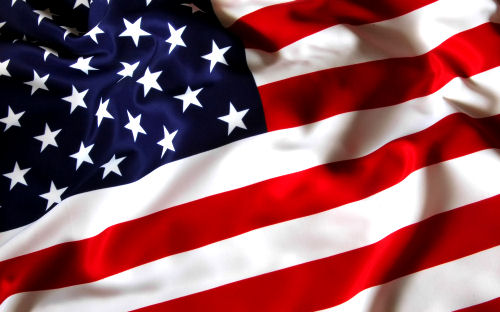 With that in mind, what follows in this interview is not only an overview of Ed Smith’s work in the fields of engineering and sales, but also a deeper discussion about race and the part it plays both in society and the technology industry.
With that in mind, what follows in this interview is not only an overview of Ed Smith’s work in the fields of engineering and sales, but also a deeper discussion about race and the part it plays both in society and the technology industry.
Along the way, you’ll also learn some of the ways that Smith’s life has intersected with major events in black history during the 20th century.
Smith’s achievements in transcending the cultural pressures against him — and his success at the highest levels of his field — come together to tell a story that, in my opinion, should be taught in every elementary school in the United States.
This interview and all my works of black history up to this point are free to reproduce (with credit) as course materials for any educator worldwide. For more information, send me an email.

This interview took place on February 4, 2016 and on March 2, 2016 over the telephone.
Personal Background
BE: When were you born, and where are you from originally?
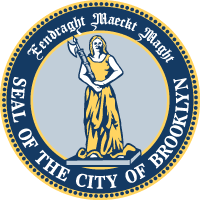 ES: I was born in 1954, and I’m from Brooklyn, New York. I grew up a neighborhood called Brownsville in the late ’50s, early ’60s. Brownsville was one of the toughest neighborhoods in Brooklyn.
ES: I was born in 1954, and I’m from Brooklyn, New York. I grew up a neighborhood called Brownsville in the late ’50s, early ’60s. Brownsville was one of the toughest neighborhoods in Brooklyn.
BE: How did you get started with electronics?
ES: My first year of high school, I went to a regular school and played football, but quickly realized it was not the path that I wanted to take.
That same year, I took a test — and by the way, prior to even going to high school, I was always an electronics bug. I caught the bug probably when I was 10 years old. I used to fix things.
I think sometimes people just catch on to certain things. Someone probably said, “This isn’t working,” and I’m thinking, “Well, why isn’t it working?”
So, I would open it up and take a look and figure out, “Oh, that wire’s not connected there,” or something like that, and I would fix it. And people would go, “Oh, he knows how to fix that.” So they would hand me other things. That’s how it starts.
BE: It’s the engineer mindset that deconstructs everything and figures out how it works.
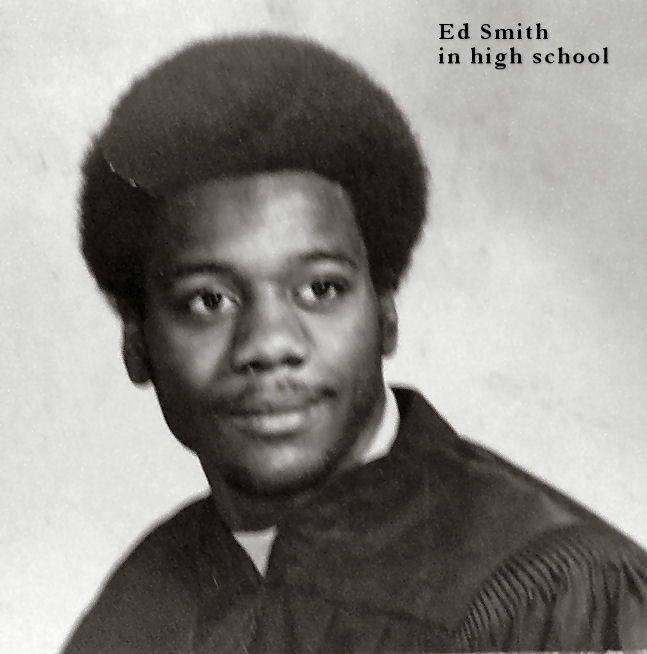 ES: That’s the mindset. Exactly. Deconstruct, reconstruct. So, I started doing that at a very young age. I used to make a pretty good penny just helping people fix things. It would be either a radio, an iron, or a toaster. Then I graduated to TVs and other things.
ES: That’s the mindset. Exactly. Deconstruct, reconstruct. So, I started doing that at a very young age. I used to make a pretty good penny just helping people fix things. It would be either a radio, an iron, or a toaster. Then I graduated to TVs and other things.
When I went to my first year of high school, I was starting to damage my knee, and I said, “You know what? This is not the sport for me, nor is it the school for me.”
So, my last semester at Madison High School, I took a test for both Westinghouse High School, which is also in Brooklyn, as well as Brooklyn Tech.
I went to Westinghouse, three years, for technical electronics. Four periods of shop, and it was all about technology at that time, and I really loved it. I had a great teacher.
You learn how to do wiring armatures, motor armatures, burglar alarm systems. Working with lathes. Solid state technology. It was all in high school.
BE: What did your parents do?
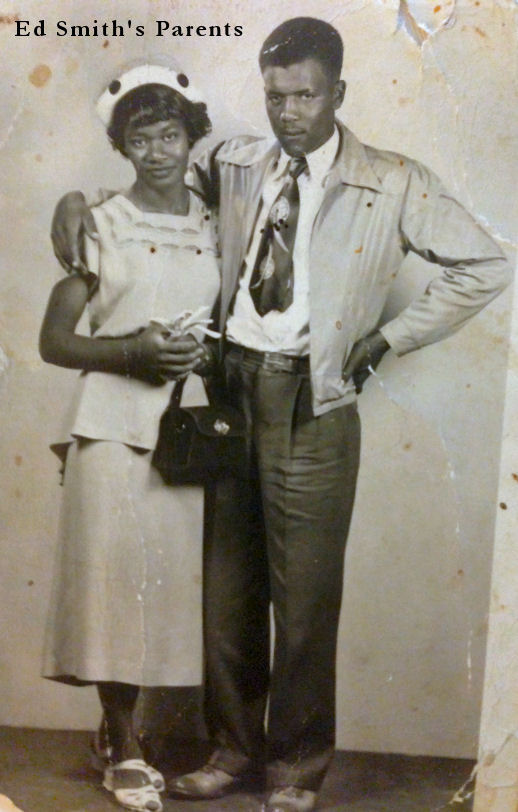 ES: My father was a truck driver, and my mother was just a domestic. She just did whatever came about, lived very poorly.
ES: My father was a truck driver, and my mother was just a domestic. She just did whatever came about, lived very poorly.
In fact, when I was growing up and started to do those things around electronics, most of the time it was to help pay the bills, or at least so she wouldn’t have to worry about paying anything for me. I would get out and do jobs so that I could get my own clothes and pretty much take care of myself.
BE: Do you think either one of them had that engineering inclination but they couldn’t act on it?
ES: No, I don’t. I don’t know where it came from, to be honest, because my mom had ten brothers. She’s from Mississippi. None of them had that engineering inclination. My father had one brother and two sisters. They were also from Mississippi. Nothing there. So I honestly don’t know. And I have six siblings.
When it came time for homework, even my oldest brother and sister, they would come to me for help for their homework. And for me it was really weird, because I’m thinking, “Well, why am I still in this grade and they don’t even know what they’re doing?” But I never told them that.
BE: How did your family end up in Brownsville?
ES: My family is originally from Mississippi, a town called Brookhaven, which is just south of Jackson, the state capital. My mother was born and raised there on a farm. My father was born and raised there — not on a farm, but he was there with his mom.
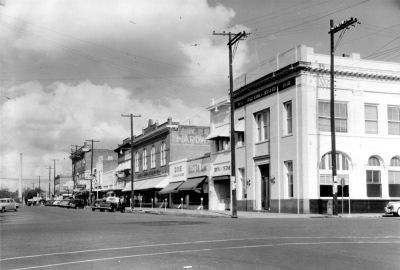 This is an interesting story, and I don’t want to delve too deeply into my family background, but just so you know how — things get a little bit difficult.
This is an interesting story, and I don’t want to delve too deeply into my family background, but just so you know how — things get a little bit difficult.
On my father’s side, my grandmother had an affair with another man, so when my father was born, it wasn’t by the man who was his “father” — the one that my grandmother was married to. It was another man. My father was a bastard child.
When he was old enough to find that out, 12-13 years old, he started running away from home. He didn’t want to be there. My grandmother couldn’t keep track of him, so she let him move in with his aunt and uncle. Their last name was Smith, and he took that name. That was not the name of his father. His father’s name was Beard.
My father, growing up, was always rebellious, and always had a chip on his shoulder. At 18 he joined the Army, spent three years there. During that time my little sister was born and my oldest brother. Right after he got out, I was born.
He took on the Army ways, which basically means he was an alcoholic. He drank a lot. He was an abusive father. If you did anything wrong, you would get beat. He would do the same thing to my mother.
BE: He was physically abusive to your mother?
ES: At 13 years old, I’m in bed asleep, I hear commotion. My brothers and sisters are yelling at my father to stop, and he’s got my mother straddled to the floor hitting her. I immediately run right to him and grab him by the neck and pull him off, and I started hitting him.
I’m just a little scrawny kid. I started hitting him, and he hit me and knocked me out. When I came to, I took, I think it was, a frying pan and ladled him on the head, knocked him out. I dragged him out of the house and locked the door. That was the last time my father ever came into our home.
BE: You were living in Brownsville at that time?
ES: Yeah. After he got out of the Army, he moved to New York from Mississippi in the early 1950s. Again, he was one of those migrants — he didn’t want to live in the South anymore, because of the things that went on down there.
A lot of the folks who lived Mississippi didn’t move to New York, they moved to Chicago. My mother had ten brothers, and most of them lived in Chicago.
BE: What was growing up in Brownsville like? I’ve read it’s horribly rough.
ES: I can tell you stories that would blow your mind, but yes, it was very bad.
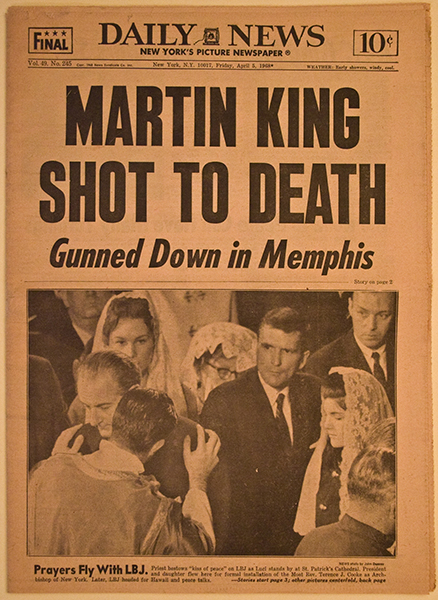 It was crime everywhere. I probably got mugged as a kid at least four or five times while going to the store to get something for my mom.
It was crime everywhere. I probably got mugged as a kid at least four or five times while going to the store to get something for my mom.
During the time when Martin Luther King was assassinated, you know I’m 14 years old, that was 1968. I could remember sitting on a corner and just watching all of the looting going on all around me. People taking bricks and throwing them into people’s cars if they were white, that kind of stuff. It was mass rioting, and I’m just sitting there witnessing the entire episode.
At that same time, at 14, the Black Panther party tried to recruit me. There were a lot of opportunities for me to not be here talking to you today.
BE: Did you look around and say, “Hey, this is crazy. I want to get out of here,” when you were that young? How early did that start?
ES: For me, that started a lot earlier than that. In fact, I think that started when I was more like ten years old. I knew I did not want to live that type of life. I just knew it. I knew there was another life.
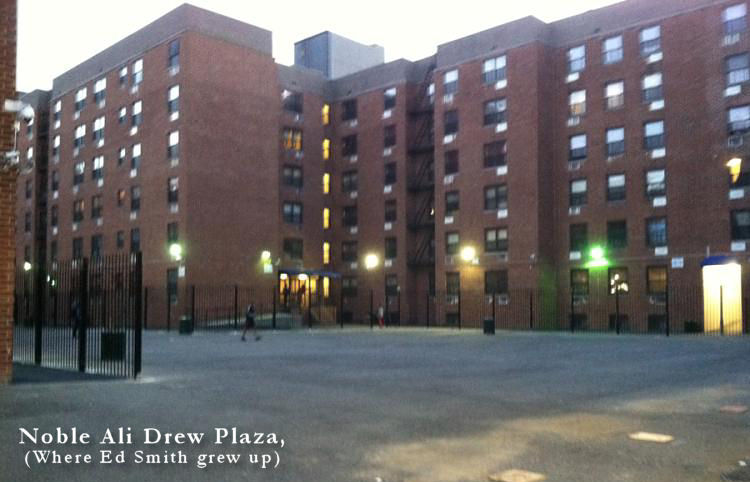 The street that we lived on when I was that age was one of the biggest streets in Brooklyn, called Eastern Parkway. It was a four-lane street, two on each side.
The street that we lived on when I was that age was one of the biggest streets in Brooklyn, called Eastern Parkway. It was a four-lane street, two on each side.
I used to sit in the window looking out at the cars going up and down that street. My only wish was to be sitting in one of those cars, driving down Eastern Parkway. Any direction, I didn’t care. I just didn’t want to be there.
BE: How did you know there was another life out there? Did you read? Did you watch TV?
ES: It was a combination of those things. I was always a reader. I read numerous books when I was young. I’m going back to 11 or 12 years old. If it wasn’t a comic book, it was a book.
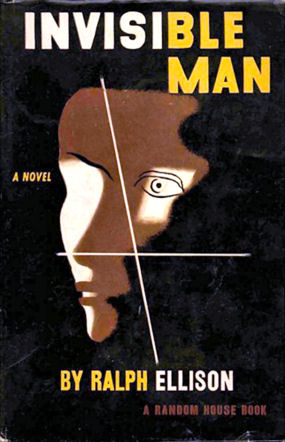 A lot of the books I read talked about experiences people had in different areas. It wasn’t just in New York, but in many cases it was. I was a person who loved to read New York crime stories and things like that. I read books that talked about some of the struggles that blacks had in New York.
A lot of the books I read talked about experiences people had in different areas. It wasn’t just in New York, but in many cases it was. I was a person who loved to read New York crime stories and things like that. I read books that talked about some of the struggles that blacks had in New York.
In fact there was one book by Ralph Ellison called ‘Invisible Man.’ It was about an African-American who would spend his time in New York, and do a number of different things that in a white man’s world would have gotten him notoriety, but in his world got him nothing.
I also read about some of the folks in black history that really tried to do the things that I thought I could hopefully do one day, like W.E.B. Du Bois. Eldridge Cleaver, I read his stuff. ‘Soul on Ice’ was extraordinary.
BE: Did you read any science fiction books?
ES: Oh, Isaac Asimov. One of my favorites.
BE: Did you follow what Martin Luther King was doing at that time? And the civil rights movement? Were you aware of that?
ES: Fully aware, yeah. Fully aware from about 12 to the time he was murdered, at 14. I was following him mostly through the news. I was really impressed with him when I was a kid.
BE: Did church play an important role in your life as a kid?
ES: As a youngster, my mom would take us to church. We would always be church kids. We wouldn’t be street kids a lot. From a very young age to teenagers, we were in church.
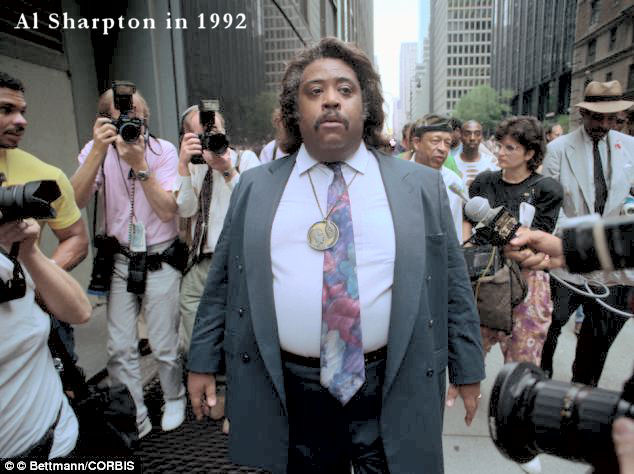 When I was in church from about 12 years old onward, I would read scriptures every Sunday morning. This was a pretty big church in Brownsville. My mother would look at me and say, “One day you’re going to be a preacher.”
When I was in church from about 12 years old onward, I would read scriptures every Sunday morning. This was a pretty big church in Brownsville. My mother would look at me and say, “One day you’re going to be a preacher.”
Now the funny thing is that there was a preacher who was 13 years old, already ordained as a preacher, who came to our church one day to do a sermon. My mother said afterwards, “That’s the kind of person you should be.”
Now I didn’t follow that, but the person who did that sermon was Al Sharpton.
BE: Did you know him personally?
ES: Never knew him, never met him, but he actually did come to my mother’s church in New Jersey, where she met him.
BE: What do you think about Al Sharpton? There are a lot of divided opinions — at least among white people — about his efficacy as a civil rights activist.
ES: My thinking about Sharpton is: At least he tried to do something. It may not have always been right, and I’m not going to say which was right and which was wrong, but at least he tried to do something for us, and for that alone I give him all of the props in the world.
BE: You mentioned being potentially recruited by the Black Panthers. Is there anything you can tell me about that?
ES: Well, quickly I would say I was 14, was following what they were doing, and was intrigued, to be honest with you.
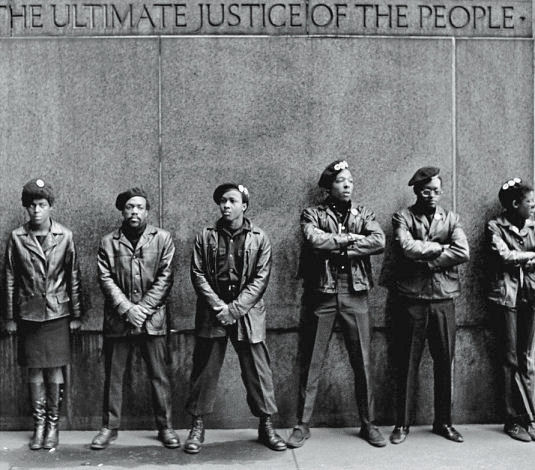 When you look at the things that were going on in the African-American neighborhood at that time, disillusionment was high on every black person’s mind. That was the way these folks would bring you in. They would talk about disillusionment, they would talk about the fact that no one cares about you, that you’re not going to get anywhere unless you help us fight the battle for all of us.
When you look at the things that were going on in the African-American neighborhood at that time, disillusionment was high on every black person’s mind. That was the way these folks would bring you in. They would talk about disillusionment, they would talk about the fact that no one cares about you, that you’re not going to get anywhere unless you help us fight the battle for all of us.
I was prepared to join that organization, and the only thing that stopped me was my brother, who was one year older than me. He told me he didn’t want me to do it. If he had not said anything, I probably would have joined.
BE: And the course of your life would be different.
ES: Completely different, yeah. I probably would have been arrested as soon as I joined, something like that.
BE: Do you think the Black Panther Party was effective in any way?
ES: I would go back to what I said about Al Sharpton. At least they tried something. The thing is is that, if you do nothing, then everything stays status quo. But they tried something.
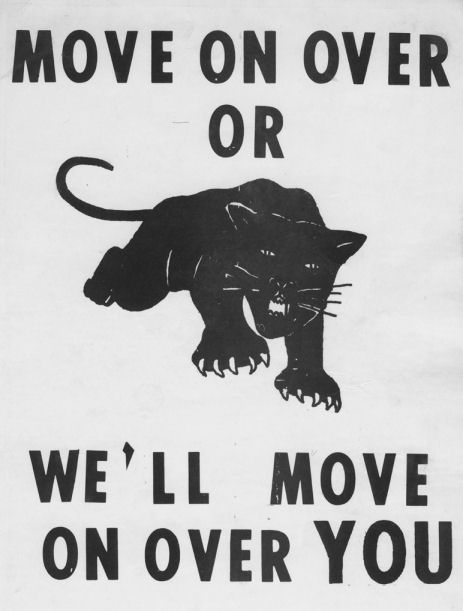 I don’t know if you know enough about the party, but it wasn’t all about carrying a gun around and just showing off. It was about feeding the homeless and feeding families as well. They did have another agenda that a lot of people don’t talk about.
I don’t know if you know enough about the party, but it wasn’t all about carrying a gun around and just showing off. It was about feeding the homeless and feeding families as well. They did have another agenda that a lot of people don’t talk about.
The point is that unless you do something radical, where you can stoke up the feelings of people and get people to think differently, you’re not going to get anything changed.
BE: You have to agitate a little bit. I had the feeling that the berets-and-guns thing was a way to get attention for their message.
ES: It was. That’s exactly right.
BE: I think it’s interesting, from a white point of view, that white people looked down on those efforts so much. Most white people in the country probably had no idea the conditions black people were living in in the projects.
ES: That’s very true.
BE: If they lived that way — if the situation were reversed — they’d likely do the same thing.
ES: That’s the whole point, right? The whole message was, “We don’t want to live like this anymore, and we’ve got to do something different to make that change.”

His First Jobs
BE: After vocational studies in high school, did you go to college? Or did you jump straight into the industry somewhere?
ES: It was a little bit of a turn, because I met my high school sweetheart right at graduation. I graduated from high school at 17. A year and a half later, at almost turning 19, I had my first kid. So I started going to New York City Community College for technical electronics, electrical engineering. Then after I had the kid, I thought, “I gotta go get a job.”
 I left school, and I started working full time doing different types of jobs, all in the same industry. I think I started wiring alarm systems. That was my first job. Then I was doing security systems where you would drop cables into buildings and put cameras on them.
I left school, and I started working full time doing different types of jobs, all in the same industry. I think I started wiring alarm systems. That was my first job. Then I was doing security systems where you would drop cables into buildings and put cameras on them.
Then I got the break that I didn’t think would happen. I started going to work for a company called Marbelite in Brooklyn.
BE: What year did you start at Marbelite?
ES: I think I was just turning 21, so that was 40 years ago. About 1975.
Marbelite made solid-state traffic signals for the State of New York, State of California, State of Florida — all over. My job was to test these traffic signals and fix them if they were having problems, and I did very well at that.
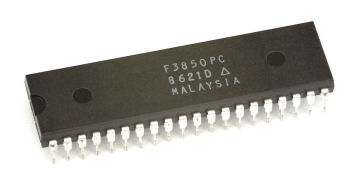 I did so well that when they started to design — and this changed my career — microprocessor controlled traffic signals, they needed some of the technicians to test the microprocessor controlled signals.
I did so well that when they started to design — and this changed my career — microprocessor controlled traffic signals, they needed some of the technicians to test the microprocessor controlled signals.
Since I was one of the best technicians they had, I was one of two that did that. They sent me to classes to study this stuff. That was my introduction to the microprocessor world.
BE: That near the very dawn of the microprocessor era. What microprocessor were they using at that time?
ES: I think they were using a Fairchild processor, the F8. That’s the training that they sent me to, and I learned how to program in assembly. One of the classes I took was at Fairchild, and I think they came to New York.

Joining APF Electronics
BE: How did your position at Marbelite turn into other jobs?
ES: Once you start going down a path, you start to recognize some things about yourself that makes you wonder what else you can do in your career.
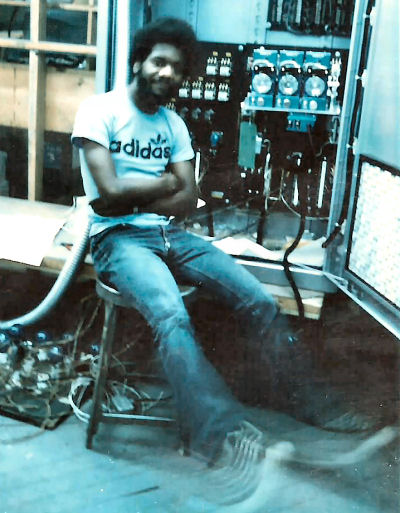 Here’s a guy who’s sitting at this manufacturing plant in Williamsburg, Brooklyn, and there was another world out there that I knew about but was not a part of, and that was the world of Wall Street.
Here’s a guy who’s sitting at this manufacturing plant in Williamsburg, Brooklyn, and there was another world out there that I knew about but was not a part of, and that was the world of Wall Street.
If you wanted to be a securities broker or some other position in midtown Manhattan, you could walk around in a suit all day and not tacky jeans.
I saw that other side that I wanted to be on, and I was never there. That was what compelled me to look for jobs in New York where I could just be more presentable when I went to work.
That was my whole idea. I definitely wanted to be somebody who would be able to dress for success.
There was a company I had always worked with called Margolin Employment Agency. They positioned me with these different jobs. They were very good at saying, “Ok. If you’re not comfortable here, try this.” Or “Here’s an interview here.” They would get me interviews, and sure enough, they got me the interview at APF Electronics in midtown Manhattan.
BE: How did the APF interview process go?
ES: I went to the interview, and I met this gentleman by the name of Ken Boilen. He quickly introduced me to one of the lead engineers. I can’t remember his last name, but his first name was Craig.
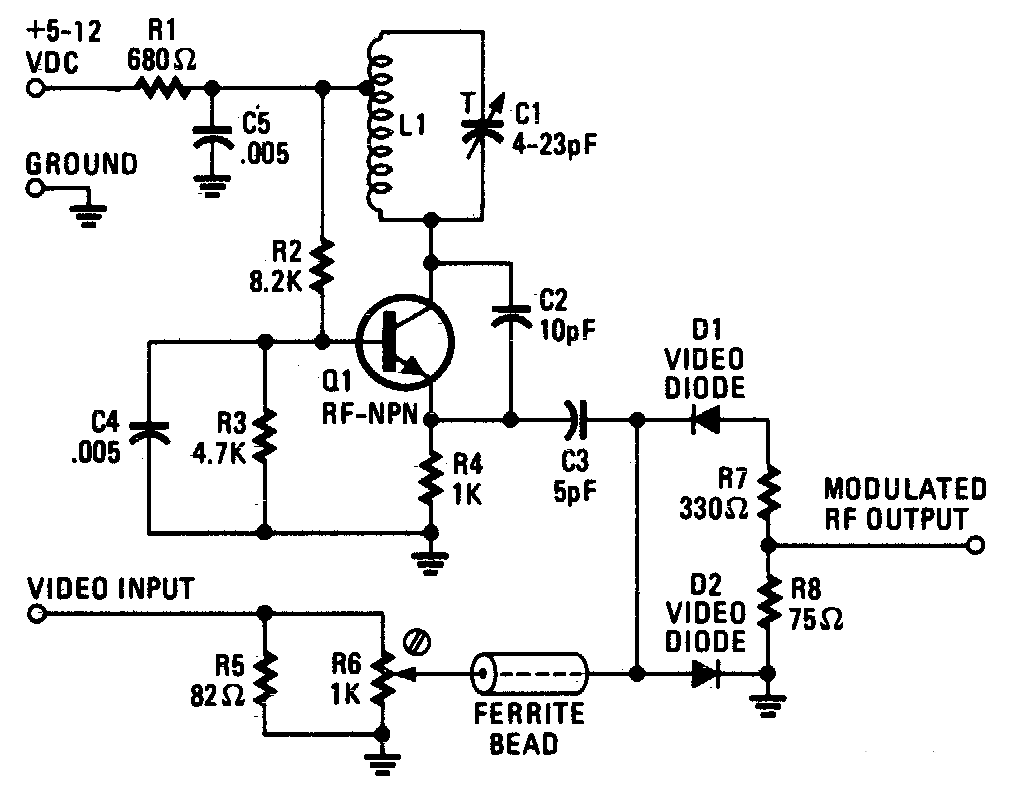 Craig put me in front of a schematic diagram, a bunch of electronic parts, and said, “Build that.” That was my interview. There was no discussion. It was, “Build that.”
Craig put me in front of a schematic diagram, a bunch of electronic parts, and said, “Build that.” That was my interview. There was no discussion. It was, “Build that.”
It took me about past lunchtime to finish it. To me it was pretty simple. It was an RF modulator, something that could just connect to a TV and display the image.
I did it pretty quickly, and I was sitting around for maybe an hour after I was done, and Craig comes around and goes, “You’re done?”
I go, “Yeah. I’m done. I’ve been done an hour ago.”
And he goes right back to Ken Boilen and he said, “All right. This guy knows what he’s doing.” And sure enough, they hired me.
Once I started at APF, that’s when I really went back to school to study. At that time, I thought I wanted to study technical electronics, but I realized I already knew that. So I went to school and studied computer science and marketing.
BE: Where did you study?
ES: I went to Pace University in lower Manhattan.
I would leave Brooklyn, go to work in midtown, leave work in midtown, go down to lower Manhattan to Pace to school, and then from Pace back home. I did that maybe three times a week. I did well. Most of the stuff came very easy to me.
BE: What did your family think about what you were doing? If you were one of the only people in your family who had this engineering mindset, did you feel like you didn’t fit in, or was there any tension there — as if you were trying to be too uppity?
 ES: That’s a good question and, frankly, one I never even thought about until you just mentioned it. For the most part, my family was pretty much on board. It’s not as though they would urge me or congratulate me or do any of those things throughout my career, but they never downed me either.
ES: That’s a good question and, frankly, one I never even thought about until you just mentioned it. For the most part, my family was pretty much on board. It’s not as though they would urge me or congratulate me or do any of those things throughout my career, but they never downed me either.
If I did my thing in engineering, one of my other brothers did his thing in advertising. Another brother was into security. He worked for the police department for a while. They had their own careers, and I had mine.
Now, I did have some friends of mine who, when they heard what I was doing, even in high school, said, “You would never understand that. They will laugh you out of the room. That’s way over your head.” Blah-blah-blah. But that was the way my neighborhood was at that time.
BE: Did that have anything to do with being black, or a perception of what you should do as a black man?
ES: That’s exactly right — “A black guy could never do this kind of thing. This is not your world.” And I’d get teased about it big time.
BE: So the prejudice was built into that career choice, and it didn’t even have to come from white people.
ES: No, it didn’t. Absolutely not. And I could see how a lot of folks who wanted to do this type of thing got talked out of it because of that prejudice. Even by their own parents in some cases.
My father told me at a very young age, “Get your chauffeur’s license so you can learn how to drive a truck, because that’s all you’re ever going to do.” That was his mentality.
BE: What made you think that you could do something different? Was it the raw talent you knew you had?
ES: Raw talent. Yeah. What I knew in my head that I could do.
By the way, when I heard comments like that from my father and from people in the neighborhood — to me, that was the challenge. It wasn’t that they were putting me down, they were challenging me. And I just accepted the challenge.
BE: As an extension of that, I was just thinking about how you mentioned dressing for success, and I wondered if that had anything to do with wanting to distance yourself from poverty or lower paying jobs. To visibly show you could be a professional.
ES: Correct. That’s exactly right. Doing something that was outside of the norm of the neighborhood.
So when I got up in the morning and went to work, I would look completely different from most of the people that left and went to work. I still lived in Brooklyn. I moved around a little bit, but was always in Brooklyn at that time.

Working at APF
BE: Who ran APF? Who owned it?
 ES: APF stands for the two guys who started the company, Al and Phil Friedman. The company was started as a company for importing electronics from Hong Kong.
ES: APF stands for the two guys who started the company, Al and Phil Friedman. The company was started as a company for importing electronics from Hong Kong.
Harry Cox was a programmer who worked with me. Steve Lipper was a sales guy. He was one of the main sales guys. His father was Marty Lipper. He was also a part of the board. Howard Boilen was VP of marketing.
BE: Was Ken Boilen head of engineering?
ES: I think his father was head of engineering. Irv Boilen.
BE: So it was a family affair.
ES: Oh, yeah. It was the Boilens and the Lippers.
BE: When did you start at APF?
ES: It was around ’76 or ’77.
BE: What was the office environment like when you worked at APF?
ES: It was a fun environment, to the point where Ken Boilen would take his team — the programmers and the engineers — out for liquid lunches. We would come back into the office at like two o’clock in the afternoon and try to do work that we could never get done.
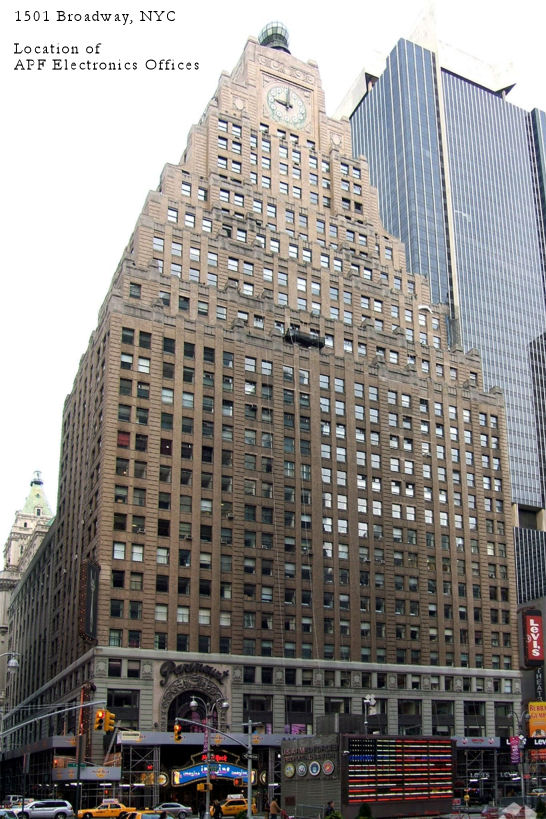 We started out somewhere off of 52nd and Madison Avenue, if I remember. Or somewhere in that area. But we didn’t stay there that long. We moved over to 1501 Broadway, which is right on the corner of Broadway and 45th Street in Times Square.
We started out somewhere off of 52nd and Madison Avenue, if I remember. Or somewhere in that area. But we didn’t stay there that long. We moved over to 1501 Broadway, which is right on the corner of Broadway and 45th Street in Times Square.
During the New Year’s celebrations, we could actually see the ball drop from one of the sales guys’ windows, and that’s where we would all come for New Year’s. It had old elevators, and an elevator operator would take you up and down.
BE: Did you have your own office at APF, or was it a shared workspace?
ES: It was an open area, so I had a bench [workbench]. I had another engineering counterpart who had a bench. We were in an area where we would do the prototype development, so we had benches. I also had my drafting table on one side, and I had a desk on the other side in that shared area.
Folks like Ken Boilen and his father had offices.
BE: Did you get along with everybody there?
ES: Oh, yeah. It was probably one of the best jobs I ever had in my life. I got along with everyone.
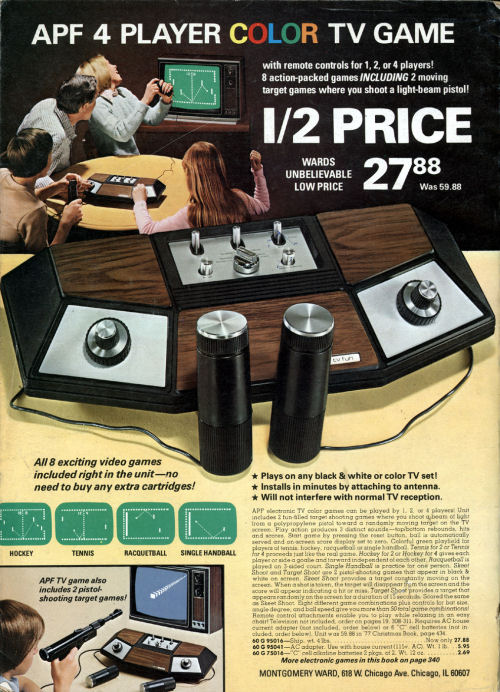 BE: How big was APF’s engineering department at that time?
BE: How big was APF’s engineering department at that time?
ES: It was a small group: myself, one other technician who did a lot of the modulator stuff that I started doing, and Ken Boilen, the lead engineer. That was the team. Then this gentleman, Craig, worked for Ken.
BE: Do you know what made APF want to get into the video game business?
ES: I honestly don’t. I wish I could remember. There was one other gentleman who was Ken Boilen’s brother, whose name is Howard Boilen. He’s still around. Ken Boilen passed away last year. But Howard is the guy who would know. His father, actually, was part of that original group of guys there.
[For info on why APF got into video games, check out my FastCompany article — Ed.]
BE: Do you know who designed the precursor to the MP1000, the APF TV Fun?
ES: That was already built by the time I got there. I would imagine it probably came from an engineering team in Hong Kong, but I don’t know.

Designing the MP1000 Console
BE: What was your first project at APF?
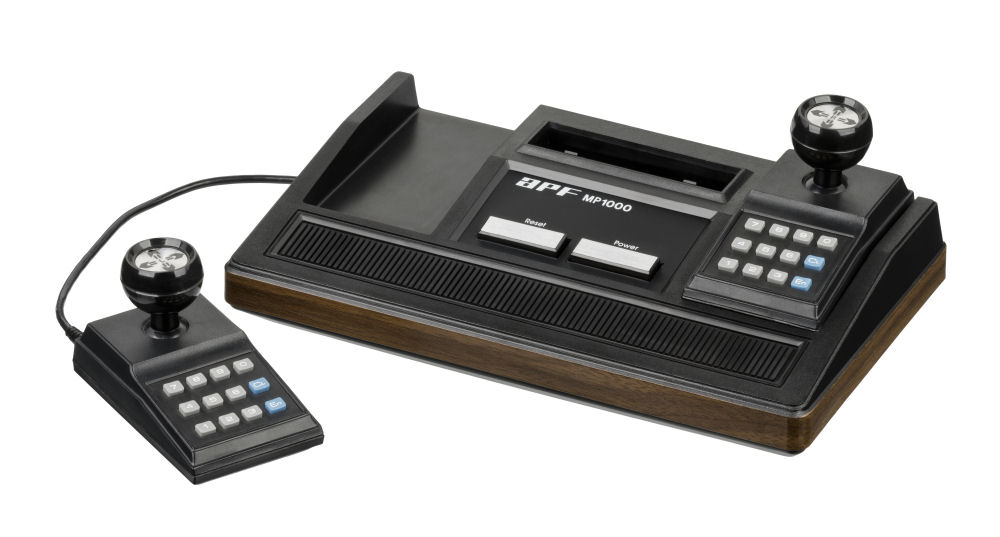 ES: My first project was to build out the prototype for their video game called the MP1000. I took a hand-written engineering diagram, and from that engineering diagram, I built and tested the prototype.
ES: My first project was to build out the prototype for their video game called the MP1000. I took a hand-written engineering diagram, and from that engineering diagram, I built and tested the prototype.
I had to do all of the peeks and pokes into the microprocessor and ensure that the inputs and outputs were working correctly, and then hand that back over to engineering for them to test it and make sure that everything was right.
Once that was complete and engineering signed off on it, I would take their hand-written drawings and go to the drafting board and draft them in a more professional manner.
BE: Who chose the Motorola 6800 as the processor for the MP1000?
ES: That decision was not made by me. I think it was made by either Ken Boilen or in collaboration with Ken and Craig.
It took a lot of study to get to understand that chipset. And it’s not just the microprocessor, but it’s also all of the I/O processors that need to be associated with it.
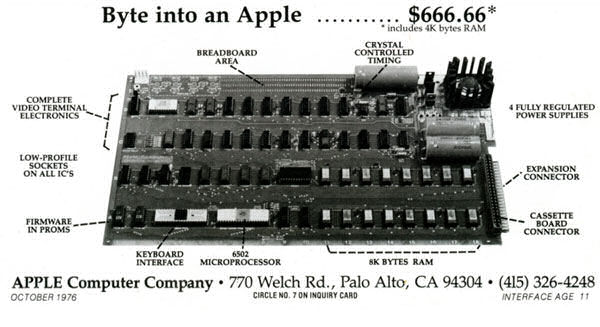 Even before the prototype was built, before the engineering diagram was written, we brought in the Apple I, the Commodore PET, and the Radio Shack TRS-80, and we reverse-engineered them.
Even before the prototype was built, before the engineering diagram was written, we brought in the Apple I, the Commodore PET, and the Radio Shack TRS-80, and we reverse-engineered them.
This goes back to the days of how I got into this whole industry — because I would take things apart and put them back together and understand how they worked. That’s exactly what I did with those machines.
The Apple was one of the main motherboards that we were trying to emulate at that time. But we thought the 6800 was a better graphics chip than the 6502. The reason I bring that up is because we had the video game [console] that we wanted to build, but we had a vision to go beyond the video game to a PC.
BE: To turn it into a computer. So that was planned from the beginning?
ES: Right.
BE: Was that the Apple I or the Apple II that you’re referencing here? Because I think the Apple II was out by that time.
ES: The Apple II was out, but I think we did the Apple I, if I remember. I don’t have any of that hardware any more.
BE: How long did it take the team to design the MP1000?
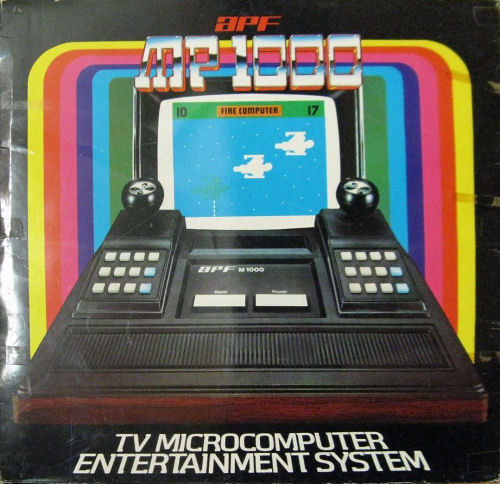 ES: The MP1000 probably took around six months to design from the original thought process to the actual schematic drawing and, by the way, that thought process went back from both the U.S. and Hong Kong. There was input from both sides to come up with that design.
ES: The MP1000 probably took around six months to design from the original thought process to the actual schematic drawing and, by the way, that thought process went back from both the U.S. and Hong Kong. There was input from both sides to come up with that design.
BE: So you were bouncing things off of other engineers as you went along?
ES: That’s correct. In fact, our primary means of communications at that time to Hong Kong was a teletype.
BE: Who designed the plastic case for the MP1000?
ES: Hong Kong would do the fabrication of the case and the joysticks and all of those parts, and then would send it back as an almost built prototype — with the case and everything.
BE: After you had the prototype, how did it become a shipping product?
ES: It would have to go back through testing. I would go back and do the re-testing of it. Then here’s the fun part, right? Because it was a video game.
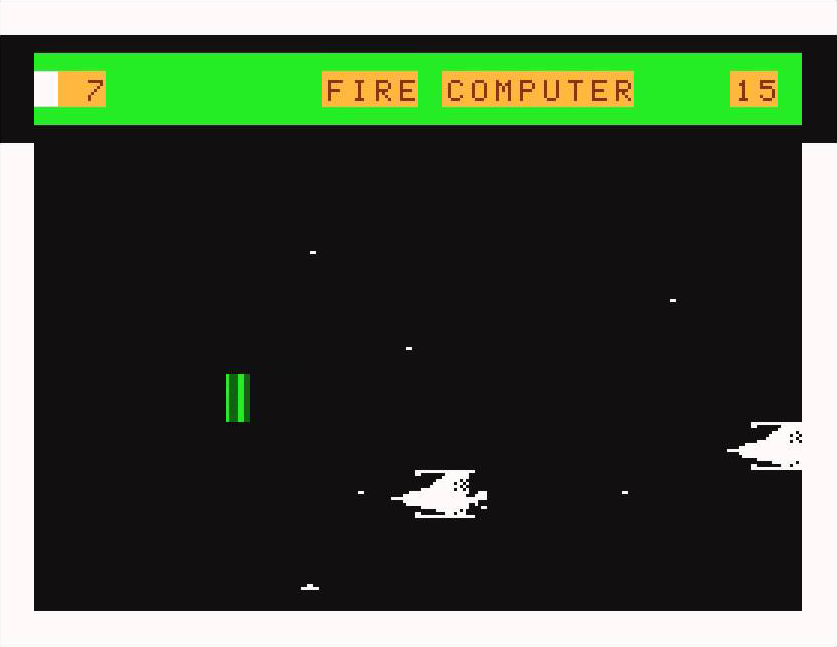 And Harry Cox was one of the primary programmers for the video game — and there were two other folks whose names I can’t remember — but they were responsible for writing the video games.
And Harry Cox was one of the primary programmers for the video game — and there were two other folks whose names I can’t remember — but they were responsible for writing the video games.
Now here’s the problem that they wanted me to solve. If they write a video game and the video game has multiple levels, who is going to play the game to make sure there’s no bugs in the game?
I had to spend the last three hours of my day playing the video games and just making sure that there were no bugs as I went up to each level.
Now, a lot of people look at that and say, “Well, that’s a great job.” That was the worst job, because every hour somebody would come to me and say, “Are you at level 10?” “No, I’m at level 7.” “Oh, you got to get to level 10.”
BE: What was your favorite MP1000 game? It looks like there were only about 13, and some of the cartridges had multiple games on it.
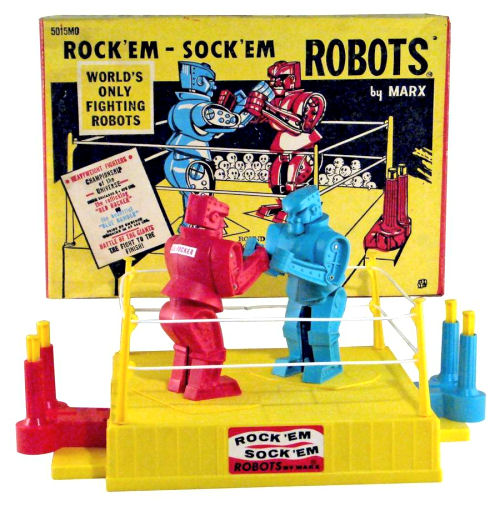 ES: One of them, Rocket Patrol, was built in ROM.
ES: One of them, Rocket Patrol, was built in ROM.
My favorite game was Space Destroyers because it was a duplication of Space Invaders that was on the Atari, and I had friends who had the Atari. I think we had some legal hurdles to get around before we could get that out.
There were actually two more that I did like. My friends in the projects loved the boxing game because it reminded them of the original hand-held boxing — the Rock’em Sock’em Robots toy.
And I’m a thought person, so Backgammon was the other game. I just loved the strategy games. Today, I play a lot of computer chess. That’s my thing.
BE: Until recently, I never had an MP1000. I have a large collection, but I had never came across one. They’re fairly rare.
ES: Yeah, they are. Again, I wish I had known. This is one of the quick stories I’ll tell you. Once we finally got the machines out into the marketplace, we had a bunch of them coming into our facilities just for demonstrations and additional testing.
I had maybe 200 or 300 of these boxes sitting in a closet in our facilities, and every other day, I would take one back home to the neighborhood and give it to someone in the projects that I lived in.
BE: They’d probably never seen anything like it before, right?
ES: Never, absolutely. No way. It was introducing them to technology. Showing them, “Here’s something you may not know about.” Their parents weren’t going to spend a hundred bucks on a video game.
BE: You brought the video games to the projects for the first time.
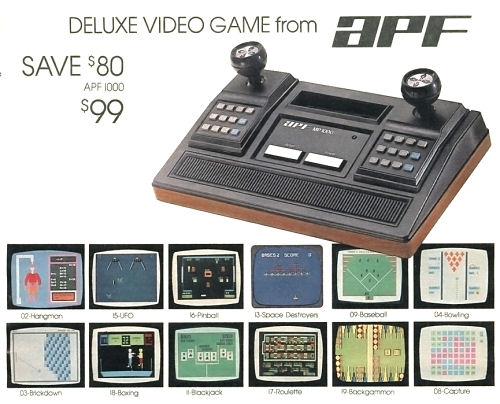 ES: Exactly the way of looking at it, yeah. I thought it was for a good reason.
ES: Exactly the way of looking at it, yeah. I thought it was for a good reason.
When I was done, there were probably a good 50 people that I knew in the projects that were playing the MP1000.
One of the things I realized immediately was, man, all they have to do is market to these people in the projects. They would sell a ton of them. That’s the whole world of XBoxes now. Right? Who’s playing this stuff? It’s us.
BE: Was there anything about that machine that would particularly appeal to people in the projects or black people in general?
ES: No one played video games back then, so they didn’t even know what to expect. But once they got it in front of them, it was all intuitive. They loved it. It was something that they could do and have a chance to interact with someone else in the apartment, versus going outside and doing something crazy.
So a lot of times, people would play the video games for hours on the day, like they do today, and not be on the street.
BE: How did the sales of the MP1000 component do by itself?
ES: By itself, it was selling well up against the Atari and the other machines at that time. It wasn’t the top-selling product out there, but it had its little market space. It was probably, if I had to look at marketing shares, it probably had 10%, 15% of the market at that time.
BE: How did you feel when the MP1000 was released? Was it excitement? Did you go out to a store and see if they were there?
 ES: The way the MP1000 was sold was through mass merchandisers. There were no electronic stores back then that could sell it. I think the only places that could sell it were places like Sears. I think there was another one too, but I can’t recall who it was. Maybe it was their sister company, Montgomery Ward, at that time.
ES: The way the MP1000 was sold was through mass merchandisers. There were no electronic stores back then that could sell it. I think the only places that could sell it were places like Sears. I think there was another one too, but I can’t recall who it was. Maybe it was their sister company, Montgomery Ward, at that time.
I did go into a Sears once and saw it, and I said to the sales guys, “I’m one of the guys…” and he goes, “Yeah, right. ” Like, black guy telling me he designed this thing. Right.

Being Black in the Industry
BE: Did you have any interactions with people from Atari or Fairchild in the video game industry back then?
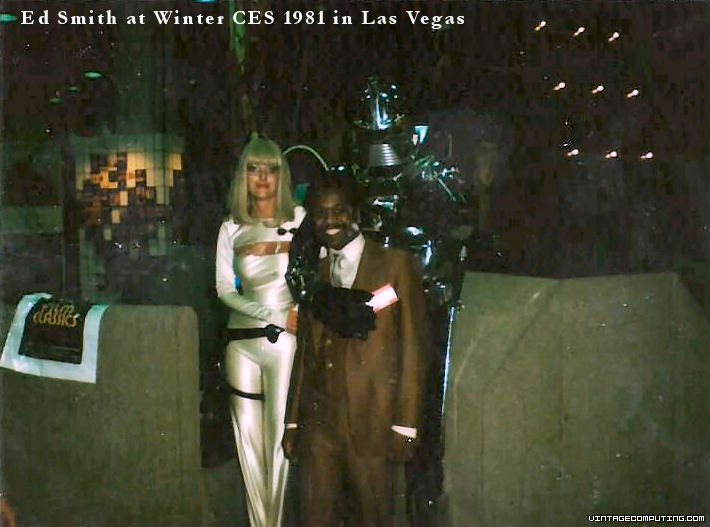 ES: Only at the first Consumer Electronics Show that I went to. I met a couple of folks there. I honestly can’t remember who.
ES: Only at the first Consumer Electronics Show that I went to. I met a couple of folks there. I honestly can’t remember who.
I met so many people. I was in such a daze. It was the first time I ever even got on an airplane. I flew to Chicago for that show, and my job was to show the games and play the games to show how they worked. I was doing booth duty. The sales guys were there with me.
That had to go back to ’79. There were a lot of hand-held calculators back then. That was the big thing. And, gosh, what was it? Some new designs of TVs. Sony was big there — Sony’s Walkman. And VCRs were big back then. Some of the first VCRs.
BE: As a black electronics engineer, did you have any challenges in your career that we haven’t talked about?
ES: Well, the clear memory from day one, since the time that I went to that Consumer Electronics Show, and throughout my career — almost to date — is how there are still just a handful of folks of color in this industry. Even when I was at my first show, if I was one of three in a room of 50,000 that I could see, I was shocked.
What immediately happened was you don’t get the same level of attention or respect that someone who has equal knowledge would get. That was a challenge.
BE: That must have been tough, like stepping into a foreign world.
ES: That’s right. It was a shock, you know. It was a learning experience.
BE: I’ve always been surprised by the lack of black people in engineering in general. That’s why Jerry Lawson came to my attention.
 ES: I read about Jerry. Even back when I was doing an interview for Black Enterprise, I heard about Jerry. In fact, he was in that Black Enterprise interview.
ES: I read about Jerry. Even back when I was doing an interview for Black Enterprise, I heard about Jerry. In fact, he was in that Black Enterprise interview.
BE: Had you ever met him before?
ES: No. I never met him. I think I had a quick conversation once on the phone with him, and it was two or three other folks as well, but it was about a video game club. It was a call about the video game club, and he just happened to be on the call.
BE: And that was the only time you ever talked to him? Even years later, you never made contact?
ES: That was the only time. Never had a chance to connect. You know, I’m out of the industry. I’m opposite-coast. I’ve been out of the video game industry for the past 30 years.

The Imagination Machine
BE: When did you start working on the Imagination Machine?
ES: By the time the MP1000 was in the market, we were probably already three months or so into the design of the console [the computer part] for that unit, which would end up being the Imagination Machine.
BE: Tell me about that. What were your goals? To turn that game console into a full-fledged PC that you could program?
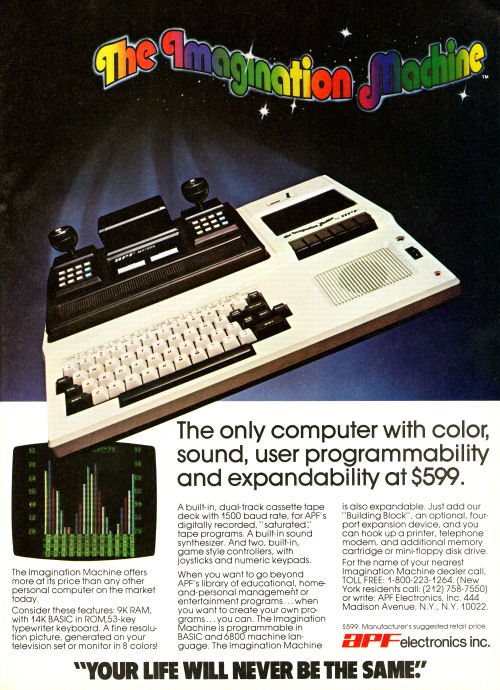 ES: Yeah. In fact, what we thought we were doing — and I can recall the conversation that the marketing folks had — was that Mattel had already announced their plans to take their video game and add a console unit to it to make theirs into a personal computer. But they only announced it. They never really did it. So we wanted to get a jump on them.
ES: Yeah. In fact, what we thought we were doing — and I can recall the conversation that the marketing folks had — was that Mattel had already announced their plans to take their video game and add a console unit to it to make theirs into a personal computer. But they only announced it. They never really did it. So we wanted to get a jump on them.
Once we heard what they were planning to do, we never announced that we were going to do it. We simply started doing it. Then we came out with the Imagination Machine.
The biggest challenge was to make sure that the buffering between the video game and the console was accurate so that when we put in the connector between the two, things wouldn’t blow up on you. Because in some cases, as you know, consumers will leave the power on, and they’ll stick that connector in, and bad things can happen.
BE: Did you have help designing the Imagination Machine?
ES: Oh, yeah. The Imagination Machine was another collaboration with engineering. They come up with the engineering schematics. I build the prototype. I test the prototype. I ensure that engineering signs-off on the prototype. I take their schematics to the drafting table and turn it into a full-fledged, professional-looking design.
It goes back to Hong Kong again for form-fitting, for them to put the fabrication around it. Then it comes back to us, where we would again test it and sign off on it so that they can begin the mass manufacturing of that machine.

A Transition to Sales at APF
BE: How did you end up becoming a salesman?
ES: One of the great stories about working at APF was what happened when I finally went to Chicago again and had a meeting with Sears around the Imagination Machine.
It was hard for Steve Lipper and the sales guys to understand how to sell a video game. They couldn’t talk the language of a PC; the only people who could were the people in engineering.
So, Ken Boilen, my boss, says to me, along with his brother Howard, who was in marketing, “We’re going to change your role to a technical specialist, and we want you to go to Sears and talk about the Imagination Machine.”
 So me, I’m going, “Yeah, this is exactly what I signed up for.”
So me, I’m going, “Yeah, this is exactly what I signed up for.”
I throw my suit on and my briefcase, and I’m off to Chicago. Sure enough, I’m in the Sears Tower pitching the Imagination Machine to a bunch of Sears executives.
It was a big lunch — the whole shebang. I’m thinking, “Yeah. This is hot.” The sales person is there, and he’s hearing my pitch, and I’m talking about RAM and ROM and all of the inputs and outputs, and the Sears people are going, “Yeah, I understand, but what about that?” I’m answering questions spot-on.
And then I get back to the office. A couple of weeks later, a sales rep comes over to me while I’m on my drafting table — I’ll never forget it. He slaps me on the back and he says, “Ed, you did so great. You just made me ten grand this month.”
My jaw hit the floor.
I turned to him and I said, “You made what?” I only made 20 grand in one year. He made half of my yearly income in one month. He sold a bunch of Imagination Machines.
I got up from my drafting table, I walked over to Howard, who was the VP of sales, and I said, “Howard, if I’m going to pitch this, don’t you think I should sell it?” And he goes, “You’re absolutely right.”
So I flipped my career from engineering to sales while at APF, and I started selling the machines that I had helped to build. Just like that. And the only motivation was the money.
BE: Did you start traveling to other retailers’ headquarters?
ES: Yeah. I would go to Computerland, Computer Factory, computer this, computer that — when that industry first started taking off. You had some of the original Apples there. Some of the Commodore PETs, the “Trash 80s,” [TRS-80] as we called them. All of those machines were there, and we tried to prop ours up right next to them.
BE: It must have been pretty amazing to be in the Sears Tower at that time — a pinnacle of your career up to that point.
ES: It was one of the highlights of my career. I can remember having a brief moment to myself while I was looking out of the Sears Tower down into the Chicago skyline, and I’m thinking, ‘How far have I come?’
I had that thought for maybe a minute or two; that just helped me to acknowledge that I’ve come a pretty long way. But that acknowledgement also made me realize I still had a long way to go. I thought that was just the start.
BE: Were you the only black guy in the room at that time?
ES: Of course. [Laughs] Of course.

The End of APF
BE: What happened to APF after the Imagination Machine? Did it sell well?
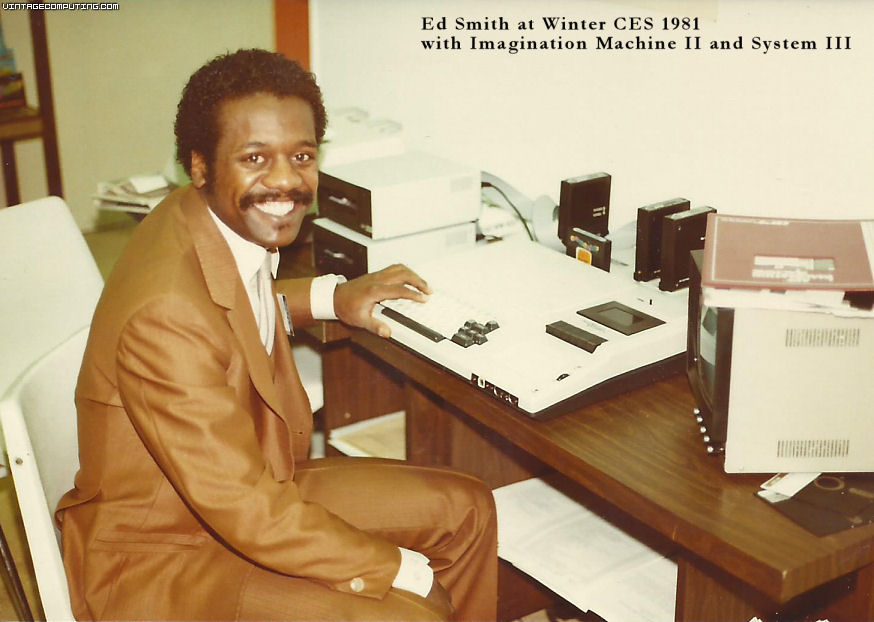 ES: It did not. The Imagination Machine never took off. And there were, I think, a couple of reasons why it didn’t.
ES: It did not. The Imagination Machine never took off. And there were, I think, a couple of reasons why it didn’t.
I don’t know if you’ve seen any pictures of it, but the marketing folks wanted to have something that they could build in to give away without charging folks additional for it. One of the things they wanted built-in was a tape drive.
We didn’t want to do it in engineering, because we wanted to model our machine after the Apple, which had nothing built in. So they built in the tape drive. Sure enough, months later — after the tape drive was built in and it was on the market — floppy disk drives came out.
BE: Then you were stuck.
ES: That kind of killed the product. You’re stuck. Nobody wanted to buy that box with a built-in tape drive. And we tried to quickly change it to having no drive, but it was too late.
BE: You’d already invested all that money into tooling everything and making all the units.
ES: Oh, yeah. It was disaster. That was actually the downfall of the company.
BE: The entire company? All right there?
ES: The entire company. Yeah. It brought down APF. That one thing.
[Sy and Mary Lipper have another perspective on the downfall of APF. Read about it in my article on FastCompany.]
BE: That goes to show the flexibility of the Apple II. It was like a blank slate. Anyone could apply what they wanted to it.
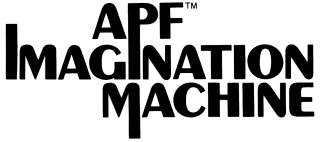 ES: Exactly. And I always said, “Why do we think we can make the best tape drive in the world? Why don’t we let other people make the drive, and maybe they can make something better?”
ES: Exactly. And I always said, “Why do we think we can make the best tape drive in the world? Why don’t we let other people make the drive, and maybe they can make something better?”
BE: Or even just pack it in and not attach it to the machine.
ES: [Laughs] Yeah. But to have it built-in was not good.
BE: How did your career at APF come to an end? What were the final days like?
ES: That’s when you got into the doldrums of going into the office because you knew that the machine wasn’t selling well.
Ken Boilen — again, I loved the guy — he was one of the best bosses and best friends I’ve ever had. He was always honest and straightforward with me, as well as his brother.
He pretty much came to me and he said, “You know, the company is not going to make it. We’re not doing well with this thing, and I don’t want you to get stuck here and be on unemployment and not take care of your family. You should go look for something else to do.”

Life After APF
BE: What did you do after APF?
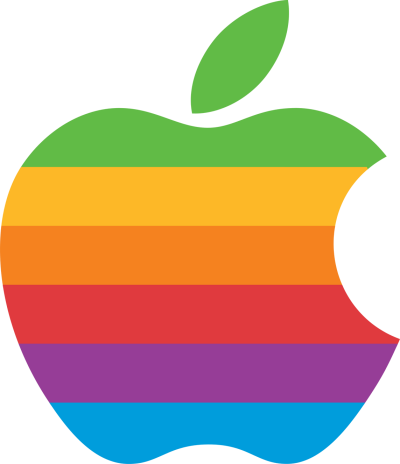 ES: Ken Boilen made a recommendation to me because at that time, APF was importing things from Hong Kong all the time and reselling them to the marketplace. They had a series of marketing representatives going around the country that would market other products for APF.
ES: Ken Boilen made a recommendation to me because at that time, APF was importing things from Hong Kong all the time and reselling them to the marketplace. They had a series of marketing representatives going around the country that would market other products for APF.
One of those manufacturing representatives was a company that had a contract at that time to be reps for Apple. I went and had a conversation with them, they hired me. They were based out of Rochester.
They wanted me to manage the upstate New York territory, which meant going from Westchester, New York up to Plattsburgh. And there were Apple dealers all through that territory that I would manage. So, that was my move from APF to being a rep for Apple.
BE: Were you working directly for Apple?
ES: No. At that time, Apple did not have a direct sales force. Apple had a network of authorized dealers called “rep firms.” I was part of a manufacturer’s rep firm based out of Rochester called Marcey and Kappy Sales. I would either set up new dealers or set up and manage distributors.
I think I spent four years managing that Apple dealership in that territory.
I don’t know how much you know about Apple during those days, but they went through their own challenges. They had the Apple II, which was somewhat successful, but the IBM PC came out and they started to lose market share. They wanted to capture that back, and the first thing they came up with after the Apple II was the Apple III, which was a complete disaster.
BE: Did you try to sell Apple IIIs at that time?
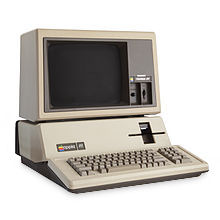 ES: Oh yeah. In fact, I was responsible for going to every dealership, setting up the Apple III in their showroom, and then explaining to them the functions of the Apple III, which in many cases didn’t really work.
ES: Oh yeah. In fact, I was responsible for going to every dealership, setting up the Apple III in their showroom, and then explaining to them the functions of the Apple III, which in many cases didn’t really work.
Right after that, I think a year later, they came out with the Lisa, which was another failure. They had two failures in a row. I think at that time it was $10,000, if I recall. But it was the first time that Apple came out with a system that used the new graphical user interface.
Then of course in 1984, the big splash with the Superbowl commercial and the introduction of the Mac. I worked during the roll out for the Apple III, the Lisa, and finally the Mac. They were still losing market share like crazy. I left Apple.
BE: Did you ever consider moving to the West Coast to try to get into any industries out there?
ES: Yes, I did. And It’s funny because when I took the job for the Apple rep, I moved to Albany, New York. That was central to the state. But at the time, if I had been single with no family — I had kids by then — I probably would have taken the plunge, but my focus was really making sure that I had the ability to take care of my family. Wherever that took me, that’s where I went.
BE: Did your wife have a career?
 ES: Yeah. Her career was in accounting, but that came later on in life. Not during the time that she was raising our kids.
ES: Yeah. Her career was in accounting, but that came later on in life. Not during the time that she was raising our kids.
BE: How many children do you have?
ES: Two girls. The oldest is now 42 and the youngest is 40.
BE: What happened after your time as an Apple rep?
ES: In those days it wasn’t just Apple anymore as a one-pony show. You had IBM PCs and IBM clones that were taking over the marketplace.
I thought if I’m going to be in that industry, I needed to know more than Apple. I went to work for a computer dealer in that same Albany territory. That dealer was called Castle Computers. They made me the general manager.
BE: What about after Castle Computers?
ES: After Castle, the family wanted to get out of Albany. It was cold and snowy. A computer dealer in the New York City territory expanded, became a chain, and that was called The Computer Factory.
I called up the president, and I asked whether or not he thought it would be a good thing for me to come in and be a sales manager for him. Sure enough, he offered me a position to open a brand new store in Philadelphia.
 He moved me and the family down to the other side of Philadelphia, just across the bridge to New Jersey. I managed that store, built up the staff, brought in the inventory.
He moved me and the family down to the other side of Philadelphia, just across the bridge to New Jersey. I managed that store, built up the staff, brought in the inventory.
BE: How did you get into networking sales?
ES: During the mid-1980s, a flurry of new products came out: products for optical scanning, computer networking, computer-aided design. I started to pick up a lot of knowledge in those areas, and one of the biggest pieces was on the computer networking side. I became an expert and would go to different venues to talk about computer networking.
One day I’m at this meeting of a Philadelphia computer group. There were about 100 to 150 people in the audience, and I’m onstage. There were also some computer product people in the audience that I had no knowledge of.
I’m onstage, and I just went through all of the aspects of computer networking from end to end. I got done, standing ovation.
Mingling in the hall, a gentleman comes up to me and says, “You know more about network than the people I have in my employ, and I would like for you to come work for me.” That gentleman was the vice president of sales for Novell.
In 1988, I left The Computer Factory and went to Novell.
BE: They weren’t a very old company at that time.
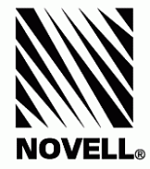 ES: They were a really young company. They asked me to start a brand new office in Philadelphia, start the territory from scratch.
ES: They were a really young company. They asked me to start a brand new office in Philadelphia, start the territory from scratch.
I spent 13 years at Novel and had a great career there. At Novell, I had the opportunity to integrate networks across IBM mainframes, mid-range, and everything in between.
I was responsible for working directly with IBM as a partner, with AT&T as a partner, with some of the biggest companies in the industry. I would bring in meetings with the president and the executives of my company with the executives of IBM and all these other companies. I was right at the top level of having these types of technology discussions at Novell.
BE: Take me up to the present, if you can.
 ES: After I left Novell, I decided to change careers and get some knowledge on the other side, which was the consulting side.
ES: After I left Novell, I decided to change careers and get some knowledge on the other side, which was the consulting side.
One of the consulting companies that was just growing was an India-based company called InfoSys. I joined InfoSys in 2001. At that time they were probably at around $500 million in sales. When I left InfoSys ten years later, they had $6 billion in sales.
BE: That’s quite a lot of growth.
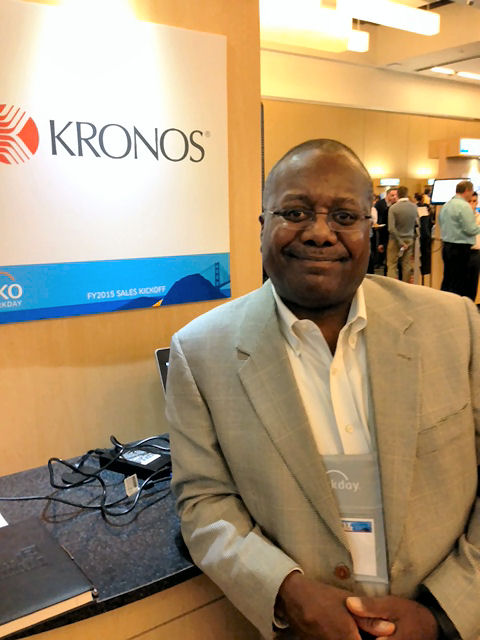 ES: Again, global alliance relationships, the same type of company relationships on the consulting side this time.
ES: Again, global alliance relationships, the same type of company relationships on the consulting side this time.
BE: What are you up to these days?
ES: Finally, after InfoSys, for the past three years I’ve been with a company called Kronos, and frankly this is my exit strategy.
I’m pretty much — I wouldn’t say burned out in the industry, but I know that my time in this industry is winding down.
I took this position because I get to work from home 90% of the time. It’s all about data analytics for employee data and working with partners in that area. That’s what I’ve been doing and probably will do for the foreseeable future until I determine that my time has pretty much been run out.
BE: Then retirement?
ES: Then retirement. That’s why I bought a home in Florida. I’m getting ready for that stage of my life.

Black Issues in Engineering
BE: Did you run into any other black professionals during the 1980s?
ES: Even as a minority who was in the throws of a computer revolution at that time, there weren’t many of me.
When I was at Castle Computers, a young man who was a minority came to me and wanted a job, but he had no experience. I brought him in as an inventory manager.
He would unload the PCs off the truck, he would package them up for clients, he would take them out the front door. Over time I showed him how to configure those PCs. I trained this young man on all of that stuff. After two years, he moved to being the tech on the bench.
I ran into him about three or four years ago, and he’s got his own company — computer maintenance for some of the firms in Philadelphia.
BE: You were sort of a mentor for him at that time.
ES: Exactly. At that time I’m thinking there’s not a lot of us. This guy came to me out of the blue, wanted a job, was a good worker, wanted to learn, and even though there were some slanted eyes at me, I proceeded to get this guy trained up to the point where he is now a very successful person in this business.
BE: Do you think there were other black people at the time who wanted to get into the industry but they found barriers to entry?
ES: Yeah, I think one of the barriers they found was that they just didn’t know how. Just through some of my interactions personally, with friends and friends-of-friends, they would always ask me questions about this.
I recall this one guy, he was a friend of a friend, but we would get together after work sometimes for a beer, and he would start asking me questions about what I was doing.
One thing I told him was about certification. Get certified, get trained, so you can at least have something to take to employers to say, “I’ve done this training.” He did that. Again, that’s one of those guys who has a great career now in this field — as a certified computer network engineer.
BE: Why do you think there aren’t more black people in the computer engineering industries? What is going on there?
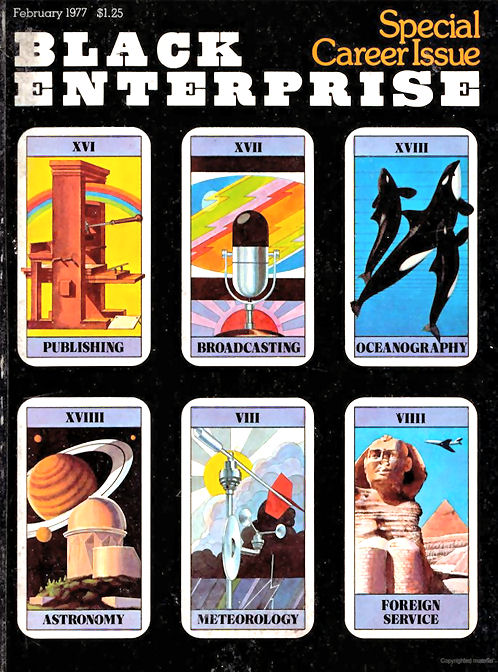 ES: If I had to guess — and believe me it would be a guess — you really have to have a burning desire to do this kind of thing. You can’t be intimidated, and I think that’s the problem with a lot of blacks in this industry. They think it’s just too hard, it’s too much for them to capture or grasp, and it’s intimidating to them.
ES: If I had to guess — and believe me it would be a guess — you really have to have a burning desire to do this kind of thing. You can’t be intimidated, and I think that’s the problem with a lot of blacks in this industry. They think it’s just too hard, it’s too much for them to capture or grasp, and it’s intimidating to them.
Knowledge, in many cases, is an intimidator for a lot of African-Americans. I hate to say this because I am one, but in many cases, a lot of us take the easy way out or try to take the easy way out, and they don’t want to gain the knowledge they need to really be successful. Once they get it, it’s great.
If you look at the industry today, which is still very small as it’s compared to African-Americans. I was looking at some of the percentages of employees for Google and Apple, about 1% is black.
Even those folks, they got it. They prosper, but they’re not telling the story to the others as well. It’s just not permeating across the African-American community.
BE: Do you think to be a black engineer you have to go against a prevailing culture of African-Americans that may look down on intellectual pursuits?
ES: Absolutely. That’s exactly it. If you look at the African-American community today, and you look at how they are trying to better themselves or get the high-paying jobs, their pursuits are in sports, in rap music, and maybe in opening a barber shop.
That’s the way it is, right? They’re not thinking, “I could actually become a computer engineer.” That’s way off the list of things they’re thinking about.
 They’re going to go to the playgrounds and play their hearts out until the point where they realize, “Well, it looks like I’m not going to get to the NBA or the NFL, so maybe I should something.” At only that point they start to think about what else they can do in their career.
They’re going to go to the playgrounds and play their hearts out until the point where they realize, “Well, it looks like I’m not going to get to the NBA or the NFL, so maybe I should something.” At only that point they start to think about what else they can do in their career.
By the way, I didn’t mention the fact that some of them, their aspirations are a little bit lower than that, which is jail, crime, and drugs. A lot of them don’t even think that far ahead because they’re just thinking about the next day getting some money in their pocket.
BE: And if they live in total poverty with no opportunities around them, it’s hard for anybody to think beyond the next day. Surviving day to day.
ES: Yeah, it’s got to be day to day. Exactly. I think it depends on how African-Americans think when they have that poverty looking at them.
They can go in that direction, but I’ve seen some of them who think just the opposite. They think, “I don’t want to be poor anymore. I’m going to do all of the things I need to do so that I’m not poor anymore.” Which are not selling drugs or doing those things, but something that’s really going to get them the education they need to be successful.
So they do that, but they don’t do it in technology, they do it in other areas.
BE: It sounds like that’s what you did, although you picked technology. You saw your life, you didn’t want to live in the projects for the rest of your life. You wanted to pull yourself out of it.
ES: Exactly. For myself and my mother and my family out of it too. Not just me. It was a combination of things, because I felt that being one of the oldest siblings, if I did this, they would follow, and they did. They all have had their share of good careers.
BE: Did you get your mother out of there eventually?
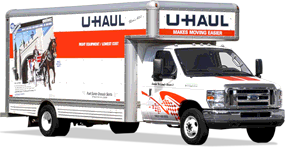 ES: I’ll tell you, when I moved to Jersey from Albany, I think it was maybe a year or two after moving to Jersey and working for Castle Computer, I pulled up to my mom’s house in a U-Haul truck, loaded it up, and got her an apartment no more than ten or 15 minutes from where I lived. Two years later, I bought her a condo for $60,000 that she still lives in today.
ES: I’ll tell you, when I moved to Jersey from Albany, I think it was maybe a year or two after moving to Jersey and working for Castle Computer, I pulled up to my mom’s house in a U-Haul truck, loaded it up, and got her an apartment no more than ten or 15 minutes from where I lived. Two years later, I bought her a condo for $60,000 that she still lives in today.
BE: Was she living in Brownsville?
ES: She was living in Brownsville, in the projects. It was so funny because I had this truck pulled up and I’m unloading her stuff out of the apartment, and everyone in the projects, they’re looking at me going, “Where are you taking her?”
I’m like, “I’m taking her out of here.”
Again, it was almost like a laugh of like, “You can’t do that. You’re just kidding.” Until there’s the realization like, “Whoa, he’s actually loading up a truck.” Yeah, that was it.
BE: Is it worth trying to tell black kids that they can succeed without sports and entertainment? Will they accept that message? Or is it so deeply ingrained culturally that you can’t change it?
ES: Personally, I don’t think it’s a message that can be told. I think it’s more of an action that needs to be taken.
You need to take them to a place and put their hands on something that they can feel and see, and know that it’s something they think they can do.
To just have a conversation, trust me, is not going to get them very far. You have to really show them. They have to believe, hands-on.
BE: I was taught growing up that things are better — civil rights and all that stuff. Everybody’s equal now, supposedly. But you know it’s just not true.
 ES: Yeah. You know, if you go to any major city — I’ve been around the country now, and I’ve been to almost every depressed neighborhood in this country, almost every one of them. I can tell you, it hasn’t changed.
ES: Yeah. You know, if you go to any major city — I’ve been around the country now, and I’ve been to almost every depressed neighborhood in this country, almost every one of them. I can tell you, it hasn’t changed.
As long as you have people who continue to live in poverty, barely able to put a meal on the table, you will always have this conflict. Nothing’s being done to change that, and that’s just an honest truth.
You can go to Brooklyn, Newark, Trenton, you can go to the south side of Chicago, you can go to Atlanta, where I’ve seen crackheads just migrate around parks like zombies. You can go to Ninth Ward of New Orleans, you can go to Oakland, you can go to Compton. It’s all the same.
BE: And just the fact that Brownsville public housing still exists shows you that nothing has been truly fixed.
ES: That’s exactly right.
BE: I’ve been reading a lot of black history recently, and about the reconstruction era, right up to life in the projects. From what I can tell, all of this is a legacy of slavery — you can trace it straight back to there.
ES: You are so right.
BE: So I’m thinking, what does it take to undo that horrible crime? Is it even possible?
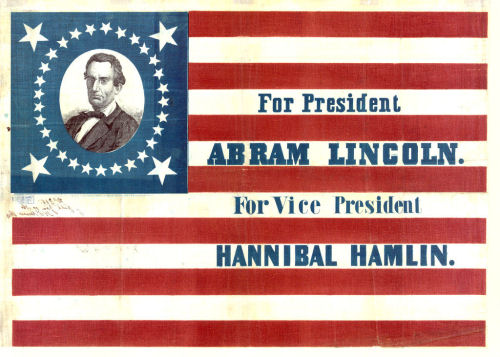 ES: I don’t think it’s possible any longer in this age, but it would have made a bigger difference if the original promise was made, which was 40 acres and a mule. That would have changed a lot. Today, no one’s going to give you that piece that you wanted — since Lincoln was killed.
ES: I don’t think it’s possible any longer in this age, but it would have made a bigger difference if the original promise was made, which was 40 acres and a mule. That would have changed a lot. Today, no one’s going to give you that piece that you wanted — since Lincoln was killed.
BE: If you could send out a message to young kids — black kids in particular who want to be engineers — what would you tell them? I know you said show them, but if there’s a message I could impart in my article, what would you tell them?
ES: I think the key thing that I would say to any African-American child — someone who is probably lost — the message I would give them is: Don’t think you are lost. Believe that you can know this stuff. Just believe you can learn. Don’t let anybody tell you that you cannot learn. If a white person can learn it, so can you.
BE: It’s been really wonderful talking to you. I love hearing your stories. What a life you’ve led.
ES: I’m happy with it. I think I’ve had a great career.


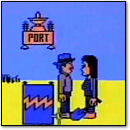

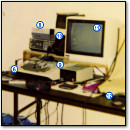

February 24th, 2017 at 4:26 pm
Wow. What a beautifully crafted story — so moving. Thank you Benj for sharing this man’s life with us.
February 24th, 2017 at 5:00 pm
Thanks, Dag. I’m glad you enjoyed it. I feel privileged to be able to share his story with the public.
February 25th, 2017 at 3:20 pm
Thank you for fleshing out the original article with this. I remember the other fondly and this one brought so much more depth to the original. Thanks!
February 25th, 2017 at 9:59 pm
Thanks so much for preparing and publishing this great interview, Benj. And, if you’re reading, thanks for sharing your memories and photos, Ed. (Looking great in that snapshot from Marbelite!) The design and vision for the Imagination Machine are fascinating. It seems like there’s a parallel to be drawn with the Amiga. In both cases, hardware features intended to support the needs of gaming created new opportunities for general-purpose computing.
I also enjoyed learning about Ed Smith’s career trajectory beyond APF and especially appreciated your broader discussions of culture, opportunity, race and racism. The computer industry always seems right at the center of political and economic change, even if many of the people people involved preferred to think of themselves as being somehow above the fray.
September 1st, 2022 at 7:36 pm
I love these interviews. It’s so hard to find interviews with black professionals where they talk about their job in whole, and not just “what is it like being black in …”
Great job…and I’m seeking more interview like this for AfAm women, so if you know of any, please point me in the right direction .. @tedjordan on twitter